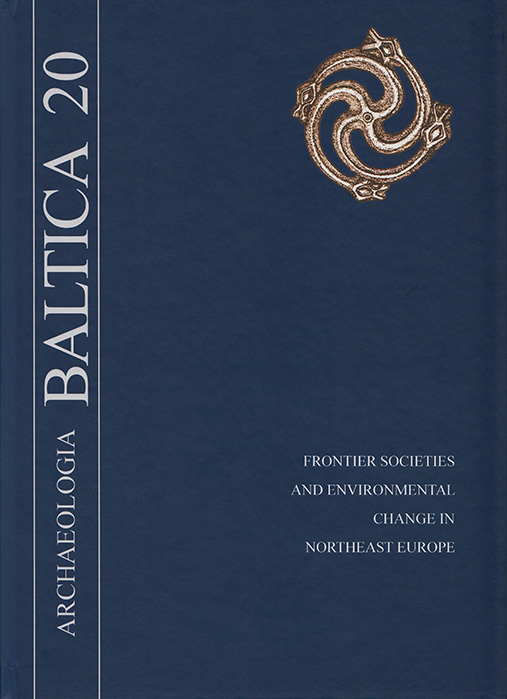Volume 20 (2013): Frontier Societies and Environmental Change in Northeast Europe, December 2013

Order by:
Pub. online: 30 Dec 2013
Type: Introduction
 Open Access
Open Access
Journal:
Archaeologia Baltica
Volume 20 (2013): Frontier Societies and Environmental Change in Northeast Europe, pp. 7–9
Pub. online: 30 Dec 2013
Type: Editorial Note
 Open Access
Open Access
Journal:
Archaeologia Baltica
Volume 20 (2013): Frontier Societies and Environmental Change in Northeast Europe, pp. 10–21
Pub. online: 30 Dec 2013
Type: Article
 Open Access
Open Access
Journal:
Archaeologia Baltica
Volume 20 (2013): Frontier Societies and Environmental Change in Northeast Europe, pp. 24–46
Abstract
Pub. online: 30 Dec 2013
Type: Article
 Open Access
Open Access
Journal:
Archaeologia Baltica
Volume 20 (2013): Frontier Societies and Environmental Change in Northeast Europe, pp. 47–58
Abstract
Pub. online: 30 Dec 2013
Type: Article
 Open Access
Open Access
Journal:
Archaeologia Baltica
Volume 20 (2013): Frontier Societies and Environmental Change in Northeast Europe, pp. 59–76
Abstract
Pub. online: 30 Dec 2013
Type: Article
 Open Access
Open Access
Journal:
Archaeologia Baltica
Volume 20 (2013): Frontier Societies and Environmental Change in Northeast Europe, pp. 77–90
Abstract
Pub. online: 30 Dec 2013
Type: Article
 Open Access
Open Access
Journal:
Archaeologia Baltica
Volume 20 (2013): Frontier Societies and Environmental Change in Northeast Europe, pp. 91–116
Abstract
Pub. online: 30 Dec 2013
Type: Article
 Open Access
Open Access
Journal:
Archaeologia Baltica
Volume 20 (2013): Frontier Societies and Environmental Change in Northeast Europe, pp. 117–133
Abstract
Pub. online: 30 Dec 2013
Type: Article
 Open Access
Open Access
Journal:
Archaeologia Baltica
Volume 20 (2013): Frontier Societies and Environmental Change in Northeast Europe, pp. 136–149
Abstract
Pub. online: 30 Dec 2013
Type: Article
 Open Access
Open Access
Journal:
Archaeologia Baltica
Volume 20 (2013): Frontier Societies and Environmental Change in Northeast Europe, pp. 150–159
Abstract